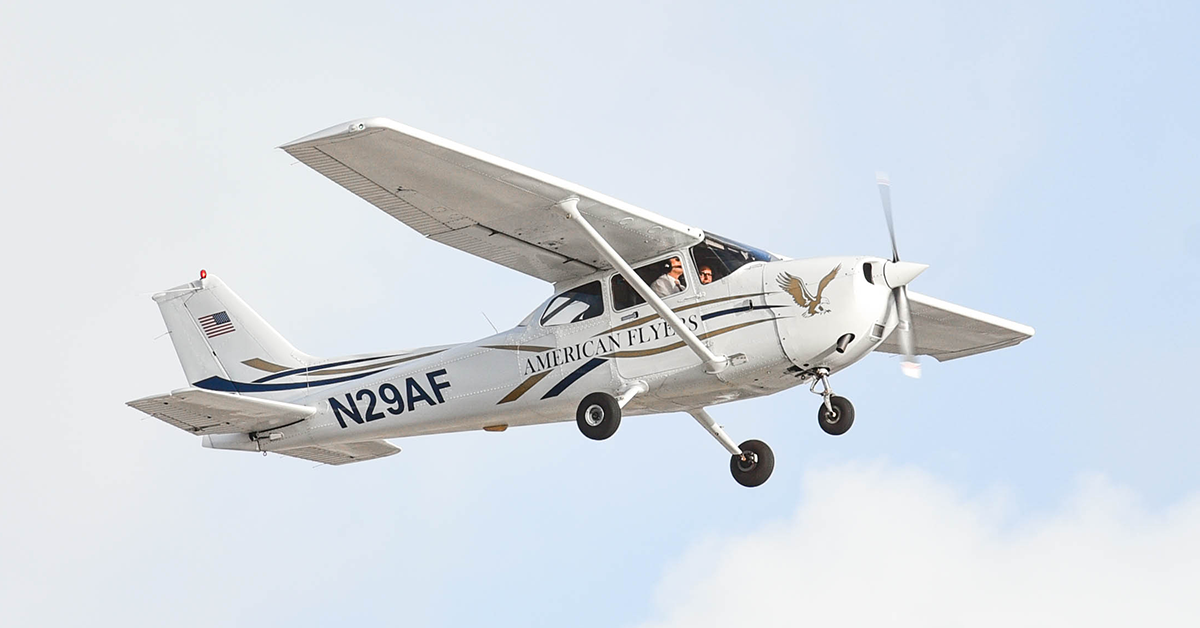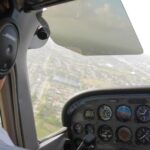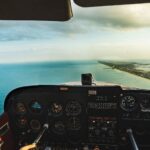By: Steven Daun, National Chief Pilot
The word “stall” means different things to different people. When people decide they want to learn how to fly, they find that many word definitions they know and understand are different in the aviation world. One of these words is “stall.” The lack of adequate preparation and presentation is sometimes enough to instill fear in a new pilot. Adding insult to injury is that some instructors themselves are not comfortable with or fully understand the stall.
When a student enrolls at American Flyers, we spend a great deal of time teaching the fundamentals and establishing a solid foundation. We do this because, as we add additional skills to the student’s repertoire, much of that understanding alleviates some or most of the anxiety that would typically appear in a training environment. If you fully understand what is happening, you are less likely to fear it. Stalls are no different, and I hope this article helps you to both understand stalls and become more confident in your ability to recognize and recover from stalls without fear.
If you look at a wing that is flying, there is a smooth airflow over the top and bottom of the wing. We know from our early flying lessons that the airflow over the top produces low pressure because of its increased velocity. Since the airflow over the bottom of the wing isn’t traveling as fast, its pressure is slightly higher. It is this pressure differential that produces lift.
When we discuss stalls, we are really discussing a disturbance in that smooth flow of air. This disruption of airflow can occur at any attitude, any altitude and any airspeed. Therefore, it is important to understand what is happening and to understand the limitations of the airplane you are flying. For the purposes of this discussion, we are referring to small General Aviation airplanes such as the Cessna 172.
There are several indications to alert you as you are getting closer to a stall as well as when you are entering a stall. The first indicator is a reduction in control effectiveness. Next is a stall horn (some aircraft utilize other indicators such as lights) which warns you that if you continue the current profile, you are going to encounter a stall. The next indicator is a slight buffet in which you will feel the airplane lightly vibrate. At the buffet the airplane is telling you that you need to relax the back pressure on the yoke to reduce your pitch attitude, and you need to increase your airspeed (performance) or you are going to stall. Let’s discuss what that means.
During your flight training, we teach and practice Power Off, Power On and Turning stalls. Power Off stalls are taught to represent the low power and high drag configuration you will see during landing. Power On stalls are taught to represent the takeoff power and clean configuration you will see during takeoff. Turning stalls are also called “accelerated” stalls and these are practiced representing your configuration during turns in the traffic pattern. Whenever practicing Power Off and Power On stalls, it is important to remember to always keep the ball centered. In each case we are teaching you to identify the configurations normally associated with stalls, so you can avoid finding yourself close to or in a stall.
The entry into the stall is critical as well. Don’t rush into the stall with abrupt pitch and power changes. Rushing the entry can result in an uncomfortably excessive pitch attitude and aircraft loading.
Besides understanding what a stall is, it is important to remember that the recovery does not have to be severe. If you stall at a 10° nose up attitude, your recovery will occur at a few degrees below that. The goal is to reduce the back pressure on the yoke, which will reduce the pitch to a point just below the point of the stall. Doing this returns smooth airflow over the wing once again.
Many pilots who don’t understand this concept will put in a dramatic recovery attitude, which can become quite uncomfortable. We have seen pilots pitch down 35° to 45° to break the stall. When questioned about this, it becomes clear they don’t understand what is happening and even worse, why it is happening.
Let’s walk through a Power Off stall and explore the effects on the airplane.
1. Always begin every maneuver with two 180° clearing turns.
Why? Because we want to make sure that there are no other aircraft around us.
2. Configure the aircraft for landing, which will include Full Flaps and Gear down.
Why? Because power off stalls usually occur on base to final, final or just prior to touchdown.
3. Begin a gradual descent at normal approach speed.
Why? Because we are simulating being in a landing configuration, attitude and airspeed.
4. Reduce the power to idle and pitch the aircraft for an attitude slightly above the horizon.
Why? Because as you get closer to touching down on the runway, you are reducing your power slowly to idle and increasing the pitch as the aircraft is flared for touchdown.
5. As the aircraft slows you will feel the controls getting somewhat less effective. But, as your instructor will point out, you are still able to control the aircraft.
Why? Because the airflow over the control surfaces is slowing down. This increases the amount of movement needed to control the airplane.
6. Keep the ball centered for Power Off and Power On stalls.
Why? A centered ball means that you are keeping the aircraft coordinated (balanced). By keeping the aircraft coordinated, you ensure that both wings will stall at the same time.
7. The first stage of stall recognition is you will hear a stall warning horn (some aircraft may utilize a different type of warning system such as lights). This will sound at an airspeed greater than the actual stall speed. This will activate depending on the type of warning system your aircraft has.
Why? Some have a little wing type switch, which has a slight downward angle. As the pitch attitude increases the relative wind hitting the leading edge will push this tab up and sound the horn. Others have a little hole in the wing that is activated by suction, which is also created as the airflow slows and changes direction over the leading edge. Yet others have little mini wings that are aligned next to the fuselage. It is important to understand what type of stall warning system your aircraft is equipped with and how it works.
8. The second sign of stall recognition is called the buffet. You will feel a slight vibration on the flight controls as the aircraft continues towards the stall. When you feel the buffet, you still have a few knots to go before the actual stall.
Why? Because the airflow over the top of the wing is starting to become disturbed. As this air becomes disturbed, it interferes with the airflow over the horizontal stabilizer causing “rocking” motion around the lateral axis of the aircraft. When this occurs, the wing is still producing some lift but not enough for efficient flight.
9. The third sign of stall recognition is the actual stall itself. You will see and feel the nose begin to pitch downward.
Why? Because the disruption of airflow over the wing is not enough to maintain the amount of lift necessary for the aircraft. When this occurs, the airplane’s pitch will begin to reduce until satisfactory airflow is restored over the top of the wing. This is not a drastic range; it only consists of a few degrees.
10. We can initiate a recovery at any of the three signs of stall recognition. The steps of recovery consist of the following:
- First reduce the pitch attitude to the horizon
- Smoothly add takeoff power
- Most aircraft call for you to reduce one notch of flaps
- Add a little back pressure to the yoke to slow and eventually stop the rate of descent as you once again pitch for a level attitude
- As the aircraft continues to accelerate, continue to reduce the flaps until they are at zero










